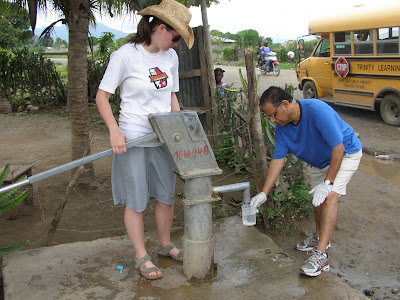By Steve Laible, CTI Volunteer, Vietnam
As part of our project work with CTI, we have been involved with the development of a device that uses rice hulls as a "feedstock" and converts the rice hulls into a cooking fuel. The rice hull makes up about 20% by weight of the rice kernel. The goal of our current work in Vietnam is to gain an understanding of where rice milling is taking place so we know where rice hulls are available in great abundance. If conditions and supply are appropriate, there may be an opportunity to introduce a rice hull production device into the area.
 |
| CTI Volunteers Steve and Nancy Laible in rice growing area of Vietnam |
A portion of the rice hull by-product is used as fuel in large cook stoves where the function is to maintain a hot fire for long periods of time. The stoves used to burn bulk rice hulls are very similar to the "cook stoves" used in the USA some 80 to100 years ago when it was common to burn corn cobs in farming areas. The cook stoves are able to use the energy value of some of the rice hulls, but the large stoves and the bulk fuel is not practical for home use. We have gained useful information from this visit. We say farewell to our hostess and continue or quest for a more modern mill and more information about using rice hulls as fuel.
























